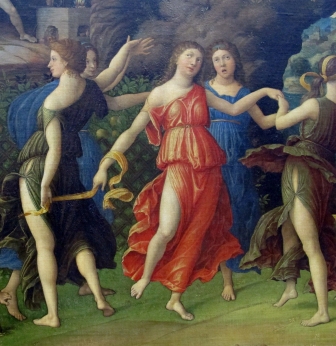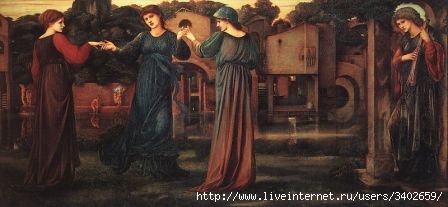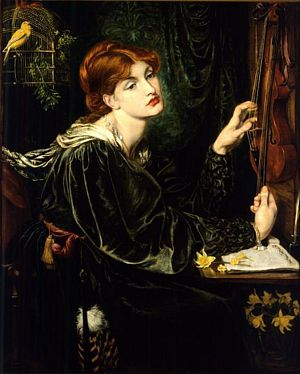-ћетки
-–убрики
- ј–“»Ќџ –ќ——≈““» (16)
- ѕ–ќ«≈–ѕ»Ќј PROSERPINA (3)
- BEATA BEATRIX (2)
- LADY LILITH@SYBILLA (2)
- ѕи€ де “оломеи (1)
- BOCCA BACIATA (1)
- «≈Ћ®Ќџ≈ –” ј¬ј (1)
- REGINA CORDIUM QUEENG of HEARTS (1)
- THE BLESSED DAMOSEL Ѕлагословенна€. (1)
- ASPECTA MEDUSA (1)
- ƒама в окне. The Lady of the Window. (1)
- ¬идение ‘иаметты. Vision of Fiammetta. (1)
- ƒневна€ мечта. The Day Dream и The Bower Meadow (1)
- „ј—“» “≈Ћј. THE BODY PARTS. (13)
- Ќј√ќ“ј ¬ »— ”——“¬≈ (5)
- ќЋЋ≈ ÷»я ‘≈“»Ў»—“ј (4)
- —“ќѕџ » »—“» скованные одной цепью. (3)
- ќЌ –≈“Ќџ≈ Ќќ∆ ». (1)
- ћќƒ≈Ћ» –ќ——≈““» (11)
- ƒ∆≈…Ќ ћќ––»— Ѕ®–ƒ≈Ќ JANE MORRIS BURDEN (4)
- ‘анни орнфорт (2)
- јЌЌ» ћ»ЋЋ≈– ANNIE MILLER (1)
- јЋ≈ —ј ¬ј…Ћƒ»Ќ√ ALEXA WILDING (1)
- ЅјЋ≈“ — “–≈“№≈√ќ я–”—ј. (9)
- HANNIBAL LECTER (5)
- ристина –оссетти (5)
- ристина –оссетти Christina Rossetti поэзи€ poems (3)
- ART DECO (4)
- √јЋ≈–≈я Ћ≈ћѕ»÷ ќ… (1)
- “јћј–ј Ћ≈ћѕ»÷ ј (1)
- „“ќ ¬ »ћ≈Ќ» “≈Ѕ≈ ћќ®ћ? (4)
- Ёлизабет —иддал (4)
- ∆»«Ќ№ ј–“»Ќ. (3)
- мо€ живопись. My paintings. (3)
- ѕќЁ«»я (1)
- јльфред “еннисон (1)
- —ѕ»—ќ ’”ƒќ∆Ќ» ќ¬ (1)
- ‘–»Ќј —≈ћ»–јƒ— ќ√ќ (1)
- Ќ»√ј ќ –ќ——≈““» (1)
- ћјЌ№≈–»«ћ (1)
- —писок работ –оссетти. The full list of Rossetti's (1)
- DOUBLE WORKS (1)
- јЌќЌ—џ –”Ѕ–» (2)
- ѕ–≈–ј‘јЁЋ»“џ (38)
- ¬—≈ ѕ–≈–ј‘јЁЋ»“џ (11)
- —ѕ–ј¬ » по ѕ–≈–ј‘јЁЋ»“јћ (4)
- ѕ–≈ƒ“≈„» (3)
- ѕ–≈–ј‘јЁЋ»“џ ¬ –ќ——»» (1)
- –ќ——≈““». ROSSETTI. (50)
- –ќ——≈““» ∆»«Ќ№ ROSSETTI LIFE (43)
- ƒжон ”иль€м ѕолидори и его ¬ампир (1)
- –ќ——≈““» —ќ —“ќ–ќЌџ (1)
- пќЁ«»я –ќ——≈““» (1)
- ћ”«≈» —ј…“џ. MUSEUMS. SITES. (15)
- ћ≈“–ќѕќЋ»“≈Ќ (3)
- ’”ƒќ∆≈—“¬≈ЌЌџ… ћ”«≈… ƒ≈Ћј¬ј–ј. (3)
- ћќ… Ё–ћ»“ј∆ (3)
- Ћ»¬Ћ≈Ќƒ— »… ћ”«≈… (1)
- ћќ» –ќћјЌџ (58)
- »— ј“≈Ћ№ 2 (41)
- роман "”читель" (9)
- ј« ≈—ћ№ (3)
- Ё «»—“≈Ќ÷»я (1)
- Novels, English versions. (1)
- мои стихи (1)
- ј—‘јЋ№“ (1)
-ћузыка
- гуд бай дарлинг
- —лушали: 169 омментарии: 0
- полный закат
- —лушали: 188 омментарии: 1
-ѕоиск по дневнику
-ѕодписка по e-mail
-»нтересы
-—ообщества
-—татистика
«аписи с меткой джон уиль€м полидори
(и еще 2 запис€м на сайте сопоставлена така€ метка)
ƒругие метки пользовател€ ↓
annie miller arie spartali stillman beata beatrix burne-jones charles allston collins christina georgina christina georgina rossetti christina rossetti christina rossetti. dante gabriel ross dante gabriel rossetti dudley gallery edward poynter eleanor fortescue-brickdale elizabeth siddal eugene onegin feet ferdinand preiss fetish gabriel charls dante rossetti girls goblin market hans suren heartsease pansy j.r.herbert john inchbold karl truppe kelmscort manor lady lawrence mariana moore naked nude painting pallas robert browning rossetti the third reich's nu the annunciation the blue silk dress the raven v. prinsep vanitas vita nuova walter deverell william holman hunt william michael woman in yellow working men's college анни миллер артур хьюз балет беатриче благовещенье ворон грант вуд данте данте габриэль россетти джейн моррис живопись искатель искусство кеннет кларк кристина россетти лемпицка лемпицка€ мари спартали стилман мариинский менады моррис нагота новый роман ножки пи€ де толомеи поэзи€ россетти прерафаэлиты прозерпина рисующий ангела роман россетти сиддал соломон симеон сомова фетиш фрэнк кадоган купер хант хьюз чаадаев эгг элизабет сиддал
–ќ——≈““» 1871 |
ƒневник |
–ќ——≈““» 1871 - 1874. ∆≈Ќў»Ќџ, »√–јёў»≈ Ќ—“–”ћ≈Ќ“ј’.
— 1871 по 1874 годы –оссетти создал четыре картины, изображающих женщин, играющих на музыкальных инструментах: La Girlandata, Veronica Veronese, The Bower Meadow и Roman Widow. ѕредполагалось, что их купит E. R. Layland , но он очень требовательно относилс€ к цвету, размеру и форме картины, стрем€сь достичь определЄнного декоративного эффекта (он декорировал свой дом) он предпочЄл картины с единственной женской фигурой и купил лишь Veronica Veronese, и Roman Widow.




Veronica Veronese
The painting is one of the most important among the many Venetian-inspired pictures that dominate DGR's artistic output during the 1860s and 1870s. Elaborately decorative, it is an excellent example of the abstract way DGR handles ostensibly figurative subject matter. As its various commentators have noticed, the picture represents “the artistic soul in the act of creation” (Ainsworth 97). It is a visionary portrait of that soul as it had been incarnated in the practise of Paolo Veronese.
Production History
Begun in January 1872 without any explicit commission, the painting was bought by Frederick Leyland as soon as DGR told him about it, and described his intentions for the work. DGR completed it in March of the same year and sent it to Leyland at that time.
Iconograpic
The French quotation on the picture frame, supposedly from The Letters of Girolamo Ridolfi, was actually written by DGR or possibly Swinburne. It constitutes a kind of explanation of some of the picture's most important iconographical features: “Suddenly leaning forward, the Lady Veronica rapidly wrote the first notes on the virgin page. Then she took the bow of her violin to make her dream reality; but before commencing to play the instrument hanging from her hand, she remained quiet a few moments, listening to the inspiring bird, while her left hand strayed over the strings searching for the supreme melody, still elusive. It was the marriage of the voices of nature and the soul—the dawn of a mystic creation” (this is Rowland Elzea's translation of the French text on the picture frame). The “marriage” noted here is emblematically represented in the figure of the uncaged bird, which stands simultaneously as a figure of nature and of the soul.
Sarah Phelps Smith has explicated the picture's flower symbolism: the bird cage is decorated with camomile, or “energy in adversity”; the primroses symbolize youth and the daffodils (narcissi) stand for reflection or meditation. But David Nolta argues that the camomile is in fact celandine, which in herbal lore was a notable specific for diseases of the eyes. (Nolta's autobiographical reading of the picture is greatly strengthened by this view of the flower symbolism.)
Pictorial
The green velvet dress in the picture was borrowed from Jane Morris, the background drapery is a Renaissance brocade, the jewelry is Indian silver, the violin is from DGR's collection of musical instruments. The fan hanging at her side is the same as that which appears extended in Monna Vanna . The musical manuscript showing the first bars of a composition seems in debt to George Boyce, to whom DGR wrote in March 1872 asking if he “had any old written music & could you lend me such” (quoted in Surtees, A Catalogue Raisonné I. 128).
Literary
The french inscription attributed to Girolamo Ridolfi is almost certainly the work of Swinburne.
Ќачата в €нваре 1872 года без определЄнного заказа


Water Willow
Dante Gabriel Rossetti
Provenance
¬ќƒяЌјя »¬ј.
ћасло. 13 на 10 1/2 дюйма.
1871 год
ћодель ƒжейн ћоррис.
артина переписана в 1893 году ‘аерфаксом ћюрреем.
¬ насто€щее врем€ находитс€ в музее ¬илмингтонского общеста из€щных искусств в ƒелаваре.
Beata Beatrix (replica) 1871-1873

ћетки: ƒанте √абриэль –оссетти Gabriel Charls Dante Rossetti ƒжон ”иль€м ѕолидори |
–ќ——≈““» 1871 |
ƒневник |
–ќ——≈““» 1871 - 1874. ∆≈Ќў»Ќџ, »√–јёў»≈ Ќ—“–”ћ≈Ќ“ј’.
— 1871 по 1874 годы –оссетти создал четыре картины, изображающих женщин, играющих на музыкальных инструментах: La Girlandata, Veronica Veronese, The Bower Meadow и Roman Widow. ѕредполагалось, что их купит E. R. Layland , но он очень требовательно относилс€ к цвету, размеру и форме картины, стрем€сь достичь определЄнного декоративного эффекта (он декорировал свой дом) он предпочЄл картины с единственной женской фигурой и купил лишь Veronica Veronese, и Roman Widow.




Veronica Veronese
The painting is one of the most important among the many Venetian-inspired pictures that dominate DGR's artistic output during the 1860s and 1870s. Elaborately decorative, it is an excellent example of the abstract way DGR handles ostensibly figurative subject matter. As its various commentators have noticed, the picture represents “the artistic soul in the act of creation” (Ainsworth 97). It is a visionary portrait of that soul as it had been incarnated in the practise of Paolo Veronese.
Production History
Begun in January 1872 without any explicit commission, the painting was bought by Frederick Leyland as soon as DGR told him about it, and described his intentions for the work. DGR completed it in March of the same year and sent it to Leyland at that time.
Iconograpic
The French quotation on the picture frame, supposedly from The Letters of Girolamo Ridolfi, was actually written by DGR or possibly Swinburne. It constitutes a kind of explanation of some of the picture's most important iconographical features: “Suddenly leaning forward, the Lady Veronica rapidly wrote the first notes on the virgin page. Then she took the bow of her violin to make her dream reality; but before commencing to play the instrument hanging from her hand, she remained quiet a few moments, listening to the inspiring bird, while her left hand strayed over the strings searching for the supreme melody, still elusive. It was the marriage of the voices of nature and the soul—the dawn of a mystic creation” (this is Rowland Elzea's translation of the French text on the picture frame). The “marriage” noted here is emblematically represented in the figure of the uncaged bird, which stands simultaneously as a figure of nature and of the soul.
Sarah Phelps Smith has explicated the picture's flower symbolism: the bird cage is decorated with camomile, or “energy in adversity”; the primroses symbolize youth and the daffodils (narcissi) stand for reflection or meditation. But David Nolta argues that the camomile is in fact celandine, which in herbal lore was a notable specific for diseases of the eyes. (Nolta's autobiographical reading of the picture is greatly strengthened by this view of the flower symbolism.)
Pictorial
The green velvet dress in the picture was borrowed from Jane Morris, the background drapery is a Renaissance brocade, the jewelry is Indian silver, the violin is from DGR's collection of musical instruments. The fan hanging at her side is the same as that which appears extended in Monna Vanna . The musical manuscript showing the first bars of a composition seems in debt to George Boyce, to whom DGR wrote in March 1872 asking if he “had any old written music & could you lend me such” (quoted in Surtees, A Catalogue Raisonné I. 128).
Literary
The french inscription attributed to Girolamo Ridolfi is almost certainly the work of Swinburne.
Ќачата в €нваре 1872 года без определЄнного заказа


Water Willow
Dante Gabriel Rossetti
Provenance
¬ќƒяЌјя »¬ј.
ћасло. 13 на 10 1/2 дюйма.
1871 год
ћодель ƒжейн ћоррис.
артина переписана в 1893 году ‘аерфаксом ћюрреем.
¬ насто€щее врем€ находитс€ в музее ¬илмингтонского общеста из€щных искусств в ƒелаваре.
Beata Beatrix (replica) 1871-1873

ћетки: ƒанте √абриэль –оссетти Gabriel Charls Dante Rossetti ƒжон ”иль€м ѕолидори |
| —траницы: | [1] |






